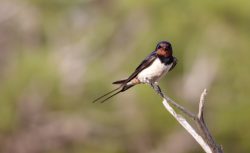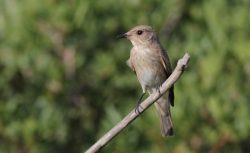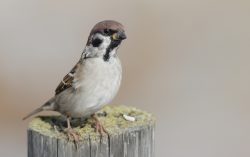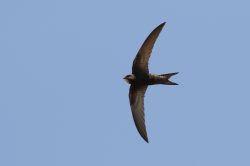About the project
Due to Malta’s size and human density, breeding birds occur in a moderate number. About 18 wild species of birds are regularly breeding in Malta, including 11 sedentary year-round residents such as the Blue Rock Thrush, Cetti’s Warbler, and Spanish Sparrow. During the summer months, different regular breeders appear as residents including Tree Sparrow, Spotted Flycatcher, Little Ringed Plover, Black-winged Stilt, Common Swift and Pallid Swift. Another 27 species irregularly or occasionally nest in different parts on the Maltese Islands throughout the year.
With this project, we are aiming to provide better breeding conditions for these bird species to increase breeding numbers, and researching effectively these breeding bird species by recording breeding efforts in line with European standards.
Raising awareness amongst the public about these species through the implementation of various public engagement and citizen-science activities is our major objective. Breeding efforts in Malta are particularly tricky in urban areas. The project shall help these birds become better-established, amongst the public about these species through the implementation of various public engagement and citizen-science activities is our major objective. Breeding efforts in Malta are particularly tricky in urban areas. For this reason, getting the public involved through the building and installation of nest boxes can have a big positive impact.
The project is funded under the Conservation of Wild Birds Funding Scheme.
- Barn Swallow (Ħuttafa)
- Spotted Flycatcher (Żanżarell tat-Tikek)
- Tree Sparrow (Ġaħġaħ)
- Swift (Rundun)
Barn Swallow (Ħuttafa)
 Barn Swallows are small birds often seen in large numbers perching on wires. In autumn they migrate to the south of Africa, crossing the Sahara Desert, then fly back to Europe to breed in spring.
Barn Swallows are small birds often seen in large numbers perching on wires. In autumn they migrate to the south of Africa, crossing the Sahara Desert, then fly back to Europe to breed in spring.
They can be seen in Malta from March to May and from September to October, with breeding birds also present in the summer. The largest breeding population of the Maltese Islands can be found in Xagħra, Gozo.
Spotted Flycatcher (Żanżarell tat-Tikek)
 As the name suggests, the Spotted Flycatcher is insectivorous, mainly feeding on flying insects. It is a migrant species that arrives in Malta in spring and a small population stays to breed between mid-May and mid-August. In early October, adults and juveniles leave the breeding areas to winter in sub-Saharan Africa.
As the name suggests, the Spotted Flycatcher is insectivorous, mainly feeding on flying insects. It is a migrant species that arrives in Malta in spring and a small population stays to breed between mid-May and mid-August. In early October, adults and juveniles leave the breeding areas to winter in sub-Saharan Africa.
Tree Sparrow (Ġaħġaħ)
 The Tree Sparrow is a resident species in Malta, normally breeding between March and August, feeding mainly on plant material, seeds and small invertebrates. Its Maltese name comes from the sound it makes when it calls.
The Tree Sparrow is a resident species in Malta, normally breeding between March and August, feeding mainly on plant material, seeds and small invertebrates. Its Maltese name comes from the sound it makes when it calls.
The Maltese breeding population is mostly concentrated in the rural west and northwest of the island. The man problem the Tree Sparrow faces is competition for nest sites with the larger Spanish Sparrow.
To avoid the two sparrow species competing with each other over housing, the Tree Sparrow nest box is designed with a small entrance hole, the slightly bigger Spanish Sparrow would not fit and thereby is not able to use it as a breeding place.
Swift (Rundun)
 The Swift is a medium-sized bird with long aerodynamic wings, specialised for life in the sky. In fact, it spends all its life flying, only returning to land to breed.
The Swift is a medium-sized bird with long aerodynamic wings, specialised for life in the sky. In fact, it spends all its life flying, only returning to land to breed.
It migrates long distances between sub-Saharan Africa where it spends the winter, and most European countries where it breeds. Swifts can be seen from mid-March to mid-November in both rural and urban areas.

